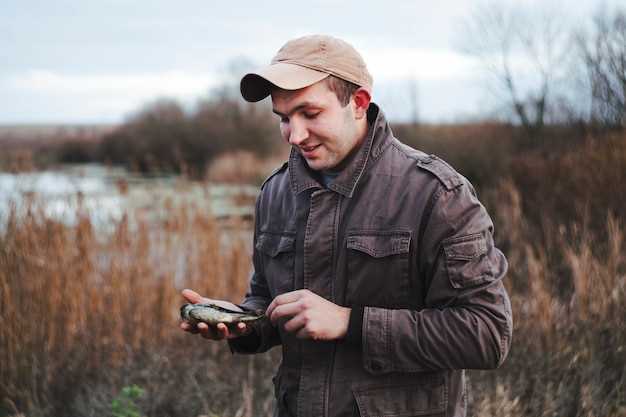
Metal detecting is an exciting hobby that allows enthusiasts to uncover hidden treasures buried beneath the earth’s surface. With the right knowledge and equipment, anyone can embark on a thrilling adventure in search of valuable artifacts, coins, and even lost jewelry. A quality detector is essential for maximizing your chances of discovering these hidden gems.
Before you start your treasure-hunting journey, it’s important to understand the basics of how metal detectors work and what to look for when searching for buried items. Different detectors are designed for various environments and types of treasure, so selecting the right one can significantly impact your success. Additionally, learning how to properly calibrate and use your detector will help you pinpoint valuable finds more efficiently.
As you prepare to venture into the world of metal detecting, remember that patience and perseverance are key. Not every dig will yield treasure, but each experience will help you refine your skills and grow as a detectorist. Embrace the thrill of the hunt, and you may just uncover a remarkable piece of history lying beneath your feet.
Choosing the Right Metal Detector for Your Needs
Selecting the right metal detector is crucial for a successful treasure hunting experience. Different detectors cater to varying needs and environments. Here are key factors to consider when making your choice:
-
Type of Metal Detector:
- VLF (Very Low Frequency) Detectors: Ideal for beginners, these detectors are excellent for finding coins and small artifacts in various terrains.
- PI (Pulse Induction) Detectors: Best for salty and mineralized soils, perfect for underwater detecting or in highly mineralized ground.
- Multi-Frequency Detectors: Versatile and effective in various conditions, suitable for those looking to search different types of terrain.
-
Weight and Ergonomics:
Consider the weight and design of the metal detector. A lightweight model is easier to handle during long searches, while an ergonomic design can enhance comfort.
-
Search Coil Size:
Larger coils can cover more ground quickly, while smaller coils can find buried treasures in tighter spaces or highly cluttered areas. Choose based on the type of detecting you plan to do.
-
Discrimination Features:
A detector with good discrimination capability can differentiate between valuable treasures and unwanted metals. This feature is essential for minimizing false signals.
-
Budget:
Determine your budget as metal detectors range from affordable entry-level models to high-end devices. Invest in quality that meets your needs without overspending.
By understanding these critical aspects, you can select a metal detector that will enhance your ability to uncover buried treasures effectively. Take the time to research and choose wisely, as the right equipment is key to a rewarding metal detecting experience.
Understanding Different Metal Detection Modes
When embarking on your treasure hunting journey, it’s crucial to comprehend the various detection modes available on your metal detector. Each mode is designed to optimize your search based on specific conditions and types of metals. Below is a breakdown of the primary modes commonly found in metal detectors.
| Mode | Description | Best For |
|---|---|---|
| All-Metal Mode | This mode detects all types of metal. It is highly sensitive and works well in diverse environments. | General treasure hunting, sites with mixed metals |
| Discrimination Mode | This mode allows users to filter out unwanted metal types, making it easier to isolate valuable treasures. | Finding coins, jewelry, and precious metals |
| Depth Mode | This mode focuses on detecting objects buried deeper within the ground, adjusting sensitivity levels accordingly. | Unearthing deeper treasures |
| Beach Mode | Designed for sandy environments, this mode mitigates the effects of saltwater, enhancing performance on beaches. | Searches on sandy beaches or along coastlines |
| Prospecting Mode | This specialized mode is useful for detecting gold nuggets and other precious metals in mineralized soil. | Gold prospecting in rugged terrains |
Understanding these modes enables novice treasure hunters to make informed decisions about their search tactics. By selecting the appropriate mode, detecting conditions can significantly improve, leading to a more successful treasure discovery experience. Familiarize yourself with your metal detector’s settings, and you’ll enhance your chances of unearthing valuable finds.
Locating Ideal Sites for Metal Detecting
Finding the right locations is crucial for successful metal detecting. The best sites are often those rich in history or where people frequently gather. Parks, beaches, and old battlefields are known for hiding buried treasures. Researching local history can provide insights into areas that may have significant finds.
Beaches offer a dynamic environment where items lost by bathers are often buried under the sand. Early mornings or late evenings, especially after storms, are prime times for metal detecting here. Parks, especially those that have been established for decades, frequently reveal coins, jewelry, and other metal artifacts that have been left behind.
Old homesteads and abandoned sites present another promising opportunity. Many historical places were once bustling with activity, leading to a higher chance of discovering buried metal. Always obtain permission from property owners before detecting on private land and follow local laws regarding historical sites.
Additionally, using historical maps can help identify locations that may have changed over time. Areas that were once open fields or gathering spots often reveal surprising finds. Utilizing a metal detector that is sensitive to different types of metal will enhance your ability to discover buried items.
Lastly, network with fellow detectorists and join local clubs. They can often share valuable tips on where to detect and what has been found in the area. By combining research, respectful exploration, and community insights, you can significantly increase your chances of unearthing hidden treasures.
Mastering Proper Digging Techniques for Finds
When it comes to metal detecting, using the right digging techniques is crucial for successfully uncovering treasures buried beneath the surface. A carefully executed dig not only preserves the integrity of the item you are seeking but also minimizes disturbance to the surrounding environment.
Before you begin digging, ensure your detector has accurately pinpointed the location of the target. Some detectors come with a built-in pinpointing feature that allows for precise targeting, which can dramatically reduce unnecessary excavation. Once you have confirmed the spot, it’s time to prepare for digging.
It’s advisable to use a trowel or a specially designed digging tool rather than a traditional shovel. These tools provide better control and help prevent damage to potential treasures and their context. Begin by gently removing the top layer of soil–this often contains roots and debris that can interfere with your search.
Once you have exposed the topsoil, create a small plug by making a circular cut around the target, ideally about 6-8 inches in diameter. Carefully lift the plug out of the ground, being cautious not to break it apart. This method allows you to replace the earth neatly after your find, showing respect for nature and other treasure hunters.
After extracting the plug, use your detector again to verify the exact location of the buried item within the soil. This step can help focus your efforts, allowing you to remove only the necessary dirt to uncover your treasure.
In cases where the target is deep, consider using a digging scoop or a small shovel designed for metal detecting. These tools allow you to sift through the soil efficiently, providing a broader area to find what you’re looking for without damaging the target.
Remember, if you suspect you’ve uncovered a valuable find, handle it with care. Gently clear away surrounding soil with your fingers or a soft brush–this minimizes the risk of damaging your treasure. Always stay aware of your digging depth to avoid unnecessary disruption to the area.
Ultimately, mastering proper digging techniques takes practice. With each outing, you will refine your skills and develop a deeper appreciation for the treasures buried beneath our feet. Remember, the thrill of discovery lies not just in finding treasure, but in the respect and care you show for the sites you explore.
Cleaning and Preserving Your Metal Detecting Discoveries

Once you locate buried metal objects with your detector, the next crucial step is proper cleaning and preservation. Each item you unearth tells a story, and handling them with care ensures that their history is maintained for future appreciation.
Before cleaning any find, it’s essential to determine the material composition. Items made of copper, silver, or gold can usually withstand more vigorous cleaning methods than those made of iron or lead, which are more susceptible to damage and corrosion. For coins, avoid harsh chemicals that can erode the details; instead, use soapy water and a soft brush to gently remove dirt.
For heavily corroded metal artifacts, a more delicate approach is necessary. Soak the item in a solution of water and mild soap for a few hours to loosen the grime. After soaking, gently scrub with a soft brush. Avoid plunging the discovery into abrasive materials or tools that can scratch the surface.
After cleaning, thoroughly dry your metal finds to prevent moisture from causing rust. For iron items, consider applying a thin layer of wax or oil to protect them from corrosion. For coins and other valuable collectibles, using a specialized preservation solution can help maintain their integrity and appearance over time.
Finally, proper storage is critical. Keep your artifacts stored in a controlled environment, away from extreme temperatures and humidity. Use acid-free boxes or display cases to prevent any further deterioration. Label each item with details of where it was found, as this adds value and historical context to your discoveries.
Joining Metal Detecting Communities for Knowledge Sharing

Engaging with metal detecting communities can significantly enhance your skills and understanding of the hobby. These groups provide valuable resources and a platform for discussion, allowing you to share experiences and tips with fellow enthusiasts. By participating, you not only gain insights into the best practices for using your metal detector, but also discover effective techniques for uncovering buried treasures.
Many communities offer forums, social media groups, or local clubs where members exchange information about recent finds, equipment recommendations, and techniques for identifying potential digging sites. Connecting with others who share your passion for metal detecting can lead to friendships and partnerships, which can be beneficial during hunts.
Moreover, experienced members often share their knowledge on topics like understanding soil conditions, recognizing signals from detectors, and proper digging methods to preserve the integrity of historical artifacts. Joining these communities can help you avoid common pitfalls and improve your success rate in uncovering buried metal objects.
Ultimately, being part of a metal detecting community fosters a culture of learning and support. Whether you are a novice or a seasoned detectorist, the collective wisdom and shared experiences within these groups can inspire you to delve deeper into the art of searching for hidden metal treasures.


